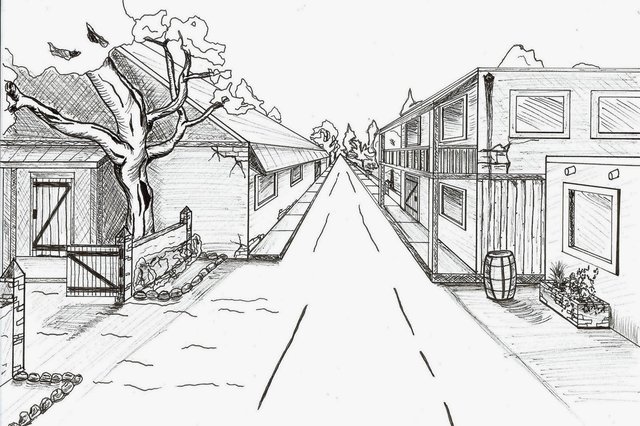Perspective drawings

ATHMOSPHERIC PERSPECTIVE
Atmospheric perspective, additionally known as aerial perspective, conveys depth through variations of values (lighting and darks), hues and clarity of factors. Foreground factors in a composition have greater fee contrasts, greater extreme colors and extra definition of info. With distance, the values and colorations grow to be impartial, the details are less described and the elements take on a stupid blue- gray look. Atmospheric perspective occurs because particles inside the air, consisting of water vapor and smog, have an effect on what is visible. bureaucracy regarded from a distance are
no longer as defined and feature much less comparison because there are greater particles inside the surroundings among the forms and the viewer. Likewise, the wavelengths of shade are affected by distance. Blues leap around, whereas the longer color wavelengths are not suffering from debris in the identical way. The result is that the blues remain more visible than the other shades inside the spectrum.

*The values are the lighting fixtures and darks of a composition. Intrinsic to atmospheric angle,
values can affect the affect of depth in a
scene. particularly contrasting values generally tend to see ahead of values with little comparison.
*The lighting fixtures of a scene affects shadows and values of paperwork. it is able to additionally have an effect on how the ones forms are perceived.
when drawing, depth can be expressed via
both linear and atmospheric angle as well as
thru using colour. Combining all three will
produce greatest results.
LINEAR PERSPECTIVE TERMS

visual depth is expressed thru linear and
atmospheric perspective, in addition to colour use. With linear attitude, intensity is finished thru traces and the size and placement of paperwork. And though compositions can range in complexity, the basic phrases and definitions covered in this section are inherent to linear angle drawings.
*The horizon is the line for which the sky meets the land or water under. the height of the horizon will affect the position of the vanishing point(s) as properly because the scene’s eye stage.
*The vanishing point is the location wherein parallel traces appear to return collectively inside the distance. in the photo, underneath, you can see how the parallel traces of the street recede and visually merge to create a single vanishing point at the horizon. A scene can
have a countless quantity of vanishing points.
*The ground plane is the horizontal surface beneath the horizon. it can be land or water. inside the image beneath, the floor aircraft is level. If it have been sloped or hilly, the vanishing factor–created via the course’s
parallel strains–may not rest at the horizon and might appear as if it’s on an willing plane.
*The orthogonal lines are lines which are directed to a vanishing point; the parallel lines of railroad tracks, as an example. The phrase “orthogonal” absolutely method right perspective. It refers to proper angles shaped
by using lines consisting of the nook of a dice proven in attitude.
*One-point attitude is a linear angle that has one vanishing point
*two-factors attitude is a linear perspective that has vanishing points
*Multi-angle is a linear angle that has restricted numbers of vanishing points
*The vantage point, not to be burdened with the vanishing point, is the area from which a scene is considered. The vantage points stricken by the placement of the horizon and the vanishing factors.
#alaoabdulhaleem
#i-rise
#airhawk-project
#whale-power
You got 100% up vote from me...
up vote me back let follow each other
Reminded me back in the days of technical drawings and engineering drawings it's seems like yesterday. But got lots of modern softwares for perspective drawing these days